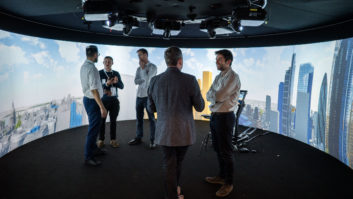 In the rapidly changing world of banking, traditional brick-and-mortar branches face numerous challenges. As financial services are increasingly being offered online, traditional banks are struggling to keep up. To differentiate themselves, financial institutions are now attempting to deliver more personalised and efficient customer services in-person. That makes sense, given that 72 percent of customers believe personalisation is “highly important” in financial services.
In the rapidly changing world of banking, traditional brick-and-mortar branches face numerous challenges. As financial services are increasingly being offered online, traditional banks are struggling to keep up. To differentiate themselves, financial institutions are now attempting to deliver more personalised and efficient customer services in-person. That makes sense, given that 72 percent of customers believe personalisation is “highly important” in financial services.
Consequently, physical branches are exploring new avenues for personalisation to attract and retain financial customers. With new personalisation and engagement techniques, banks can attract customers seeking services they might otherwise receive on a mobile app. In line with this vision, banks are also shifting to quantity over quality – they’re building community-focused locations as opposed to numerous branches all over the country.
But how can banks create these highly tailored experiences, even location-specific ones? One method that banks should consider is digital signage – a form of electronic display that utilises digital technology to present dynamic content, allowing for real-time updates, interactivity, and targeted communication.
DISPLAY CONTENT
An obvious advantage of digital signage is that it can change information and content moment by moment. So, for instance, banks can use digital signage to display relevant, real-time financial information. By connecting digital signs to the cloud and real-time data streams, banks can showcase everything from stock prices to exchange rates updated second by second. This updated financial market data gives customers the information they need to make informed decisions about their finances.
Beyond real-time financial information, digital signs also offer a platform for promoting bank services, special offers, and promotions. Banks can update these promotions dynamically based on customer profiles and preferences, encouraging clients to explore additional services that align with their financial goals. A digital display near the entrance might highlight a limited-time offer on a new savings account, enticing customers to inquire about the promotion during their visit. Digital signage is turning banks into retail spaces, in a way.
However, this communicative content goes beyond the customer to employee engagement and management, as well. There is a big push to use digital signage to communicate with and organise employees, ensuring all information is clearly and accessible communicated to staff. One survey even found that organisations that leverage digital signage for internal communication have five times higher employee engagement.
USER FRIENDLY
With their interactive capabilities, digital signs offer a user-friendly interface that allows customers to navigate through various banking options. Intuitive touchscreens and menus guide users through the self-service process, making it easy for customers to perform transactions independently. Customers can access their account information, including balances, recent transactions, and account statements. Displaying this information in a visually appealing and easily comprehensible format enhances the overall self-service experience.
Banks can also equip their digital signs with language options and accessibility features, catering to a diverse customer base. This inclusivity ensures that customers from various linguistic backgrounds and those with different accessibility needs can comfortably engage in self-service transactions.
Digital signage systems also often include analytics tools that track user interactions and preferences. Banks can leverage this data to continuously optimise the user interface, content presentation, and overall functionality of self-service digital signage, improving the customer experience over time.
ANALYTICS BENEFITS
Another advantage of digital signage is the information it provides. Digital signage can capture real-time analytics through a combination of sensors, data sources, and interactive features that enable continuous monitoring and analysis of user behaviour and content effectiveness. Digital signs often incorporate motion sensors or cameras to detect the presence and movement of individuals in proximity to the display, determining what draws people in, and what chases them away.
For instance, motion sensors integrated with signage can capture how customers move through a branch space and measure dwell time in certain zones – indicating if one piece of content attracts more customers or people spend a longer time looking at it than average. This helps banks determine what advertising content captures the most attention, while also flagging what’s ineffective – what people walk past without stopping to look.
Some digital signs also incorporate feedback mechanisms, such as surveys or sentiment analysis tools, to capture user opinions. Analysing feedback in real-time allows for immediate adjustments to content or interactive features based on customer preferences and satisfaction levels.
Generally, getting real-time data on foot traffic and engagement is becoming increasingly valuable. This data helps banks develop unprecedented levels of hyper-personalised content for different demographics – even helping banks shift display content based on what demographic is likely to come in at certain times or to display content based on what’s trending.
As Financial institutions reinvent traditional branches with a more personalised experience, digital signage should be front and centre when budgeting branch transformations.







